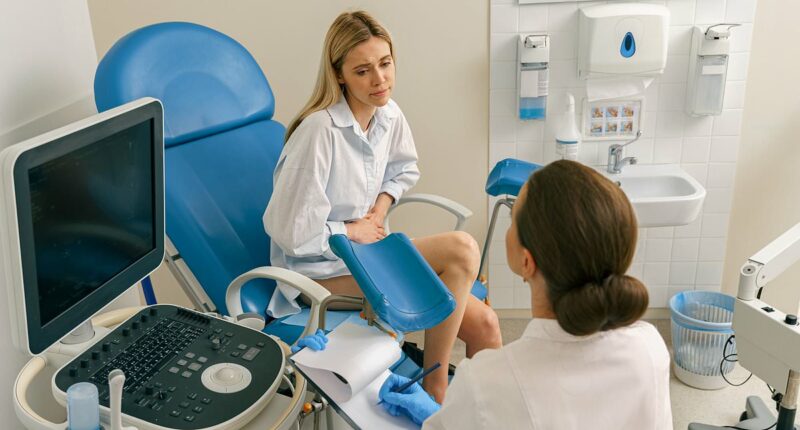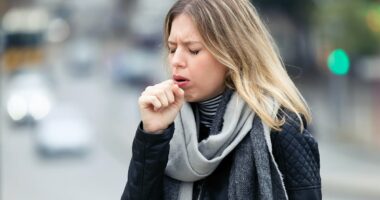Share this @internewscast.com
Americans living in the south could be most at risk of sexually transmitted diseases, a new study reveals.
Louisiana had the country’s highest rates of sexually transmitted diseases (STDs), which include chlamydia, gonorrhea, syphilis and HIV.
It suffered 1,200 STD cases per 100,000 residents, making it the state most stricken by diseases that spread through sex, skin-to-skin contact and from mother to child during birth.
In particular, Louisiana had the highest rate of chlamydia, America’s most common STD that affects 1.6million adults every year.
Mississippi and Alaska followed close behind with 1,084 and 1,067 STD cases per 100,000 people, respectively. Alaska also recorded the most instances of gonorrhea, which experts have previously blamed on weak public health infrastructure and high rates of substance abuse.
It’s the same state where a woman died earlier this year of disseminated gonococcal infection (DGI), which occurs when the sexually transmitted infection gonorrhea invades the bloodstream and travels to vital organs.
Meanwhile, Georgia, which had the fourth-highest overall STD rate, recorded the most HIV cases with 25.5 per 100,000.
South Dakota rounded out the top five, recording the highest rate of syphilis infections.

A new report ranks the states with the highest rates of STDs (stock image)
On the other hand, states in New England had the lowest STD rates, with Vermont, New Hampshire and Maine falling to the bottom of the list.
The rankings, provided by a new study from Invigor Medical, used the latest CDC data – from 2023 – to calculate STD rates for all 50 states.
The researchers found many states ranking in the top 10 have limited access to sexual health clinics and emphasize abstinence education as a primary method to prevent pregnancy and STDs, which could be drivers behind their higher rates.
And many states do not mandate sex education in schools, meaning millions of students miss out on potentially life-saving information.
States like Alaska and South Dakota also have higher numbers of outbreaks among Indigenous populations, which are more likely to have limited access to care.
People in the New England region, on the other hand, typically have higher household incomes and rates of insurance, making them better able to access care and sexual education.
The report also found women in the US are 10 percent more likely than men to be diagnosed with an STD, with a rate of 902 cases per 100,000 compared to 819.
This could be because women are screened more often during routine reproductive health visits, while cases in men may go undiagnosed.
The vagina also has a moist, thin lining that is easily penetrable, making it prone to infections.
Louisiana had the country’s highest rate of chlamydia with 792 cases per 100,000 residents. This added up to 36,242 diagnoses in 2023.
Nationwide, chlamydia affects 1.6million Americans every year.
Common symptoms of chlamydia include abnormal or foul-smelling vaginal discharge, pelvic pain, abdominal tenderness, pain during intercourse, irregular bleeding, and fever.
However, less than half of infections show symptoms, and many are asymptomatic.
Mississippi followed close behind overall and had the second-highest rate of chlamydia, with 701 cases per 100,000.
Alaska recorded 1,067 STDs per 100,000 people in 2023 and had the highest rate of gonorrhea at 311 cases per 100,000. This adds up to about 2,280.
Untreated gonorrhea can lead to serious health issues, including pelvic inflammatory disease and infertility. And while the infection can usually be easily treated, some strains are resistant to commonly used antibiotics – making them harder to clear.
Earlier this year in Alaska, an unnamed woman in her 50s died from disseminated gonococcal infection (DGI) after contracting gonorrhea. This causes her to go into sepsis and heart failure.
In DGI, gonorrhea infections travel to the bloodstream and infect organs throughout the body due to the infection going untreated. It’s thought to occur in just 0.5 percent of gonorrhea cases.
She is one of eight Alaskans to be identified with DGI since January of this year, the state health department said.

The above chart from Invigor Medical shows the rate of STDs by race and ethnicity

The above chart from Invigor Medical shows the rate of STDs in the US by age group and sex
Georgia, which had the fourth-highest rate of STDs overall, topped the list for HIV infections. It had an HIV rate of 25.5 per 100,000, totaling 2,359 cases.
Nationwide, the HIV rate is 14 cases per 100,000 people.
HIV, which stands for human immunodeficiency virus, attacks the body’s immune system and leaves it unable to fight off foreign invaders. Left untreated, it can lead to acquired immunodeficiency syndrome (AIDS).
Georgia’s high rate could be from recent HIV outbreaks in the Atlanta area.
South Dakota rounded out the top five with an overall STD rate of 1,015 per 100,000. It also had the highest rate of syphilis at 223 per 100,000 or roughly 2,000 cases.
Syphilis among all ages is on the rise nationwide, increasing nearly 80 percent over the past five years, and the surge is worrying public health officials, as the disease can advance to damage the brain, nerves, eyes, and heart if it goes untreated.
Symptoms begin with small open sores on the genitals, mouth, or rectum, as well as enlarged lymph nodes.
In the second stage, a skin rash develops, as well as genitals sores, fever, muscle and joint pain, vision changes, and loss of appetite.
When the infection advances further, it can inflame and damage heart valves and slowly degrade the brain, causing personality changes, memory loss, difficulty making decisions, and strokes.
On the other end of the spectrum, Vermont recorded the fewest STD cases with a rate of 241 per 100,000.
Schools in the state have more robust sexual health education programs than in other areas like the south. Its largest demographic is also over 60, a group historically less affected by STDs.















